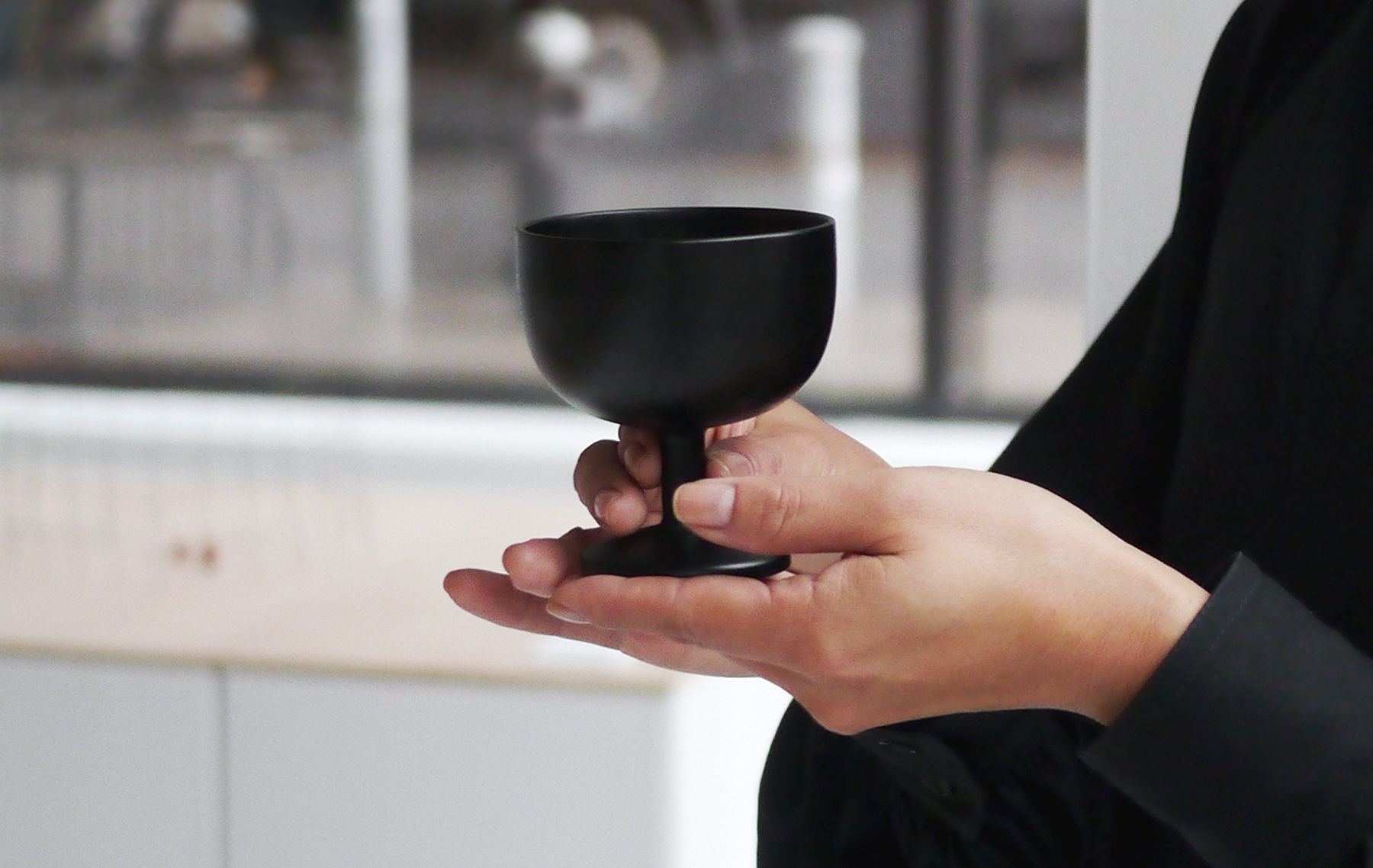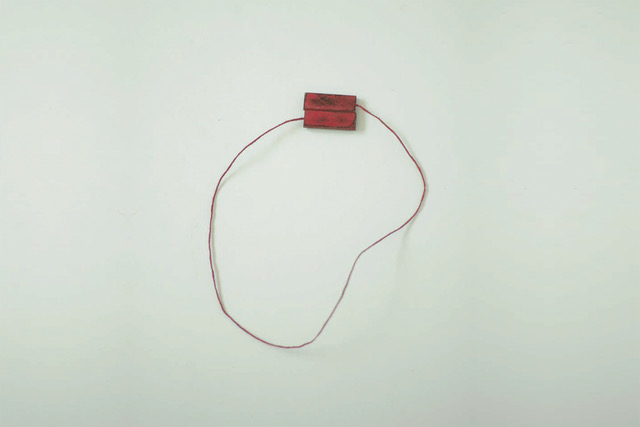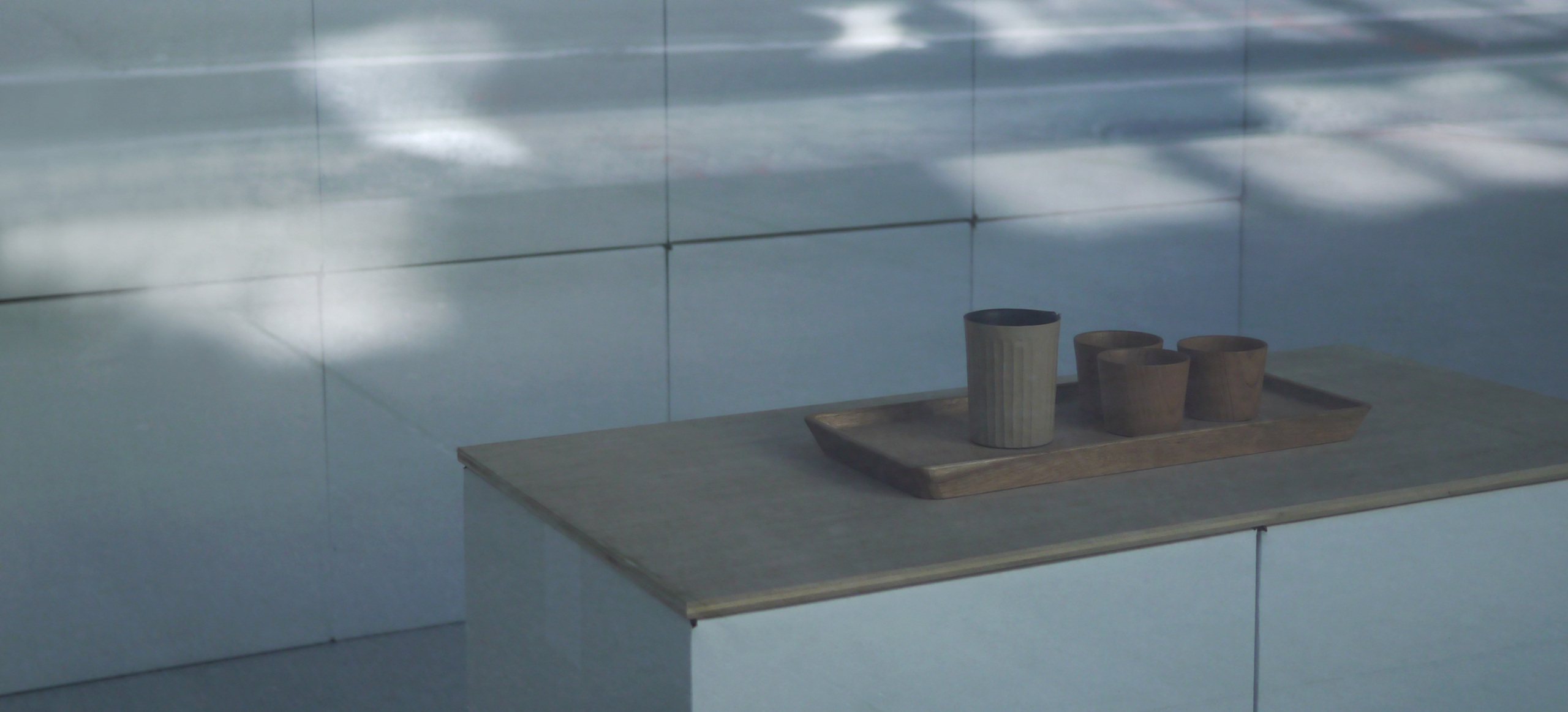
Our latest exhibition, ‘Crafts, and Then’ – An Exhibition of Art Works and Wood Tableware by Ryuji Mitani, was held at our temporary Annex Gallery at 24 2nd Avenue just a few weeks ago. It was a completely new space to design and manage, and was such a refreshing escape from our day-to-day operations. The Annex also provided a rare opportunity for us to work with a larger-scale in mind.



The impetus for the Annex was simply the need for a space that includes more wall hanging areas than our flagship location at 2 Extra Place. The challenge was to find a building material for a short-term stretch that was also fit to house the variety of artworks and the largest collection of tableware by Mitani-san that we have ever held. After brainstorming, we landed on the idea of using white corrugated cardboard boxes as literal building blocks to construct the fixtures… 335 boxes to be exact. For those who want to delve into the list of materials we used, you can reference this post. After dismantling the show, we flattened all the boxes and transferred them to our office, where they are being reused for shipping online orders. We will also repurpose the unfinished white oak plywood to build fixtures we regularly rotate at our main location.


As we were building out, with immense help from regular faces, including our dear friend John Medley, we realized the layout was just a larger version of our 2 Extra Place location. The Annex also occupied a corner with floor to ceiling windows and posed the same challenges with impeding columns and elusive dark corners to light. We solved these issues by making displays out of bizarre protruding walls and using accent lighting in areas like the expansive back wall and entryway.
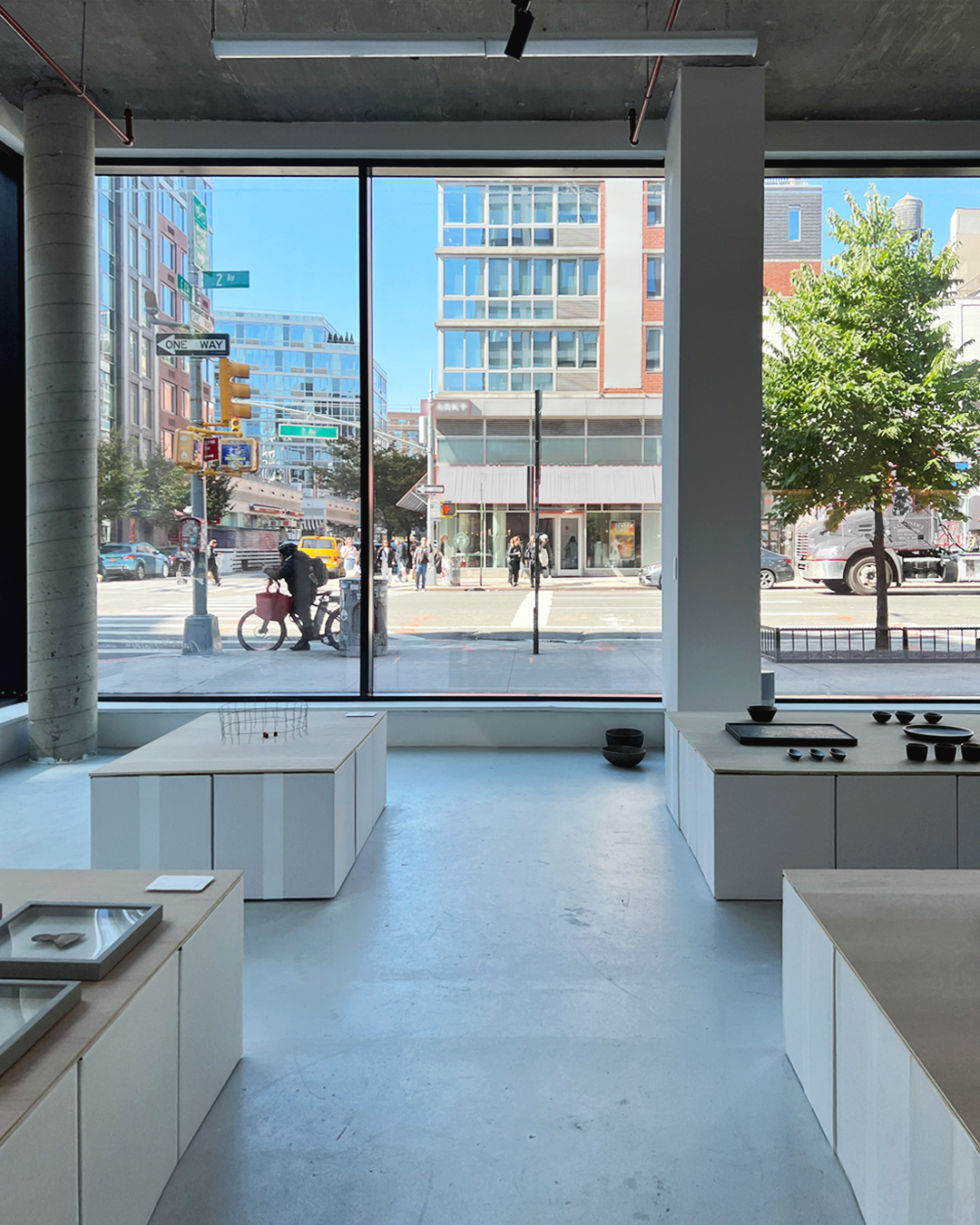




In the end, laying the foundation for the exhibition was one thing, but it was truly Mitani-san’s collection that made it an incredible achievement. As always, the works have a quality that makes mundane meals into memorable experiences. Eating off a painting is the best way to describe it, with warmth and proportions that make each bowl, plate, cup or tray a functional object. Everything Mitani-san does, he puts his soul into it. You can even feel it in the writings and images in his concept book that accompanied the exhibition. Since a storm came through on opening day, which had the city on a State of Emergency alert, we postponed the opening to the next day. Mitani-san spent that stormy afternoon signing dozens of books with unique drawings of his Red String Telephone sculpture – a poetic symbol of “connection.” You can read the online version of the book that we published in English and Japanese here.


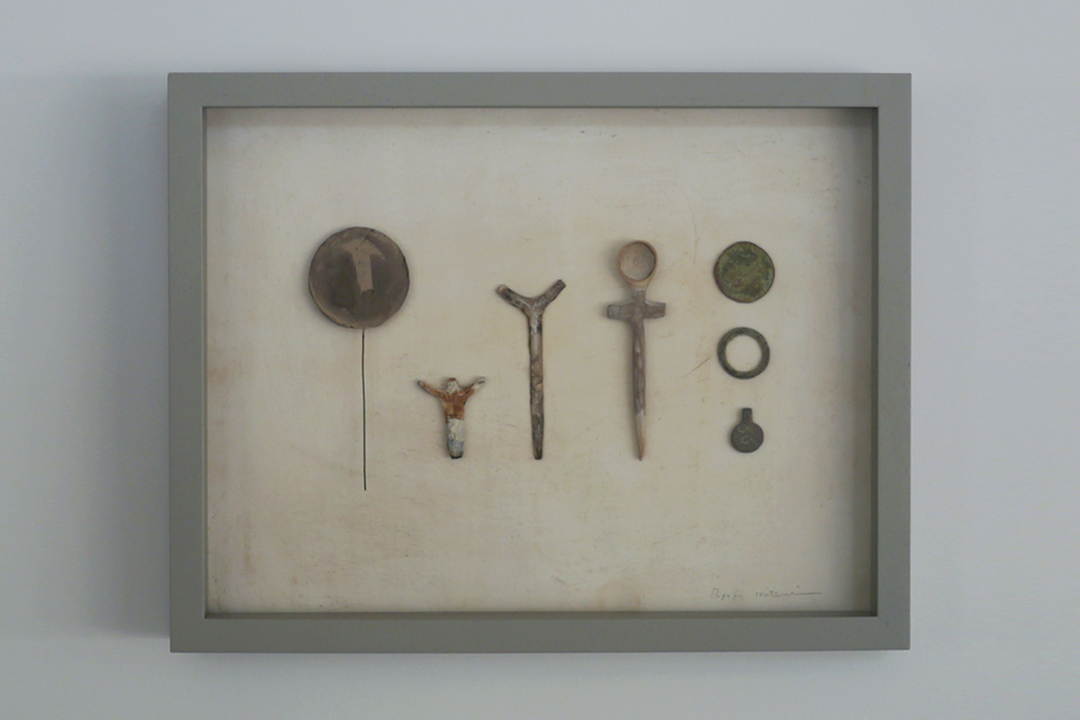

This particular collection by Mitani-san presented many art works that needed to be displayed in a specific manner – from the miniature diorama A Figure Skiis and Metal Photo Prints to the Red String Telephone and Wooden Molds.




We also showed a series of three Framed Patterns that are actual to-scale paper stencils that Mitani-san uses as guidelines when carving his forms. It was especially fun to compare the three-dimensional results, like our collaboration Ice Cream Cups, to the flat stencils as they embody space in such a different way when held in your hands.


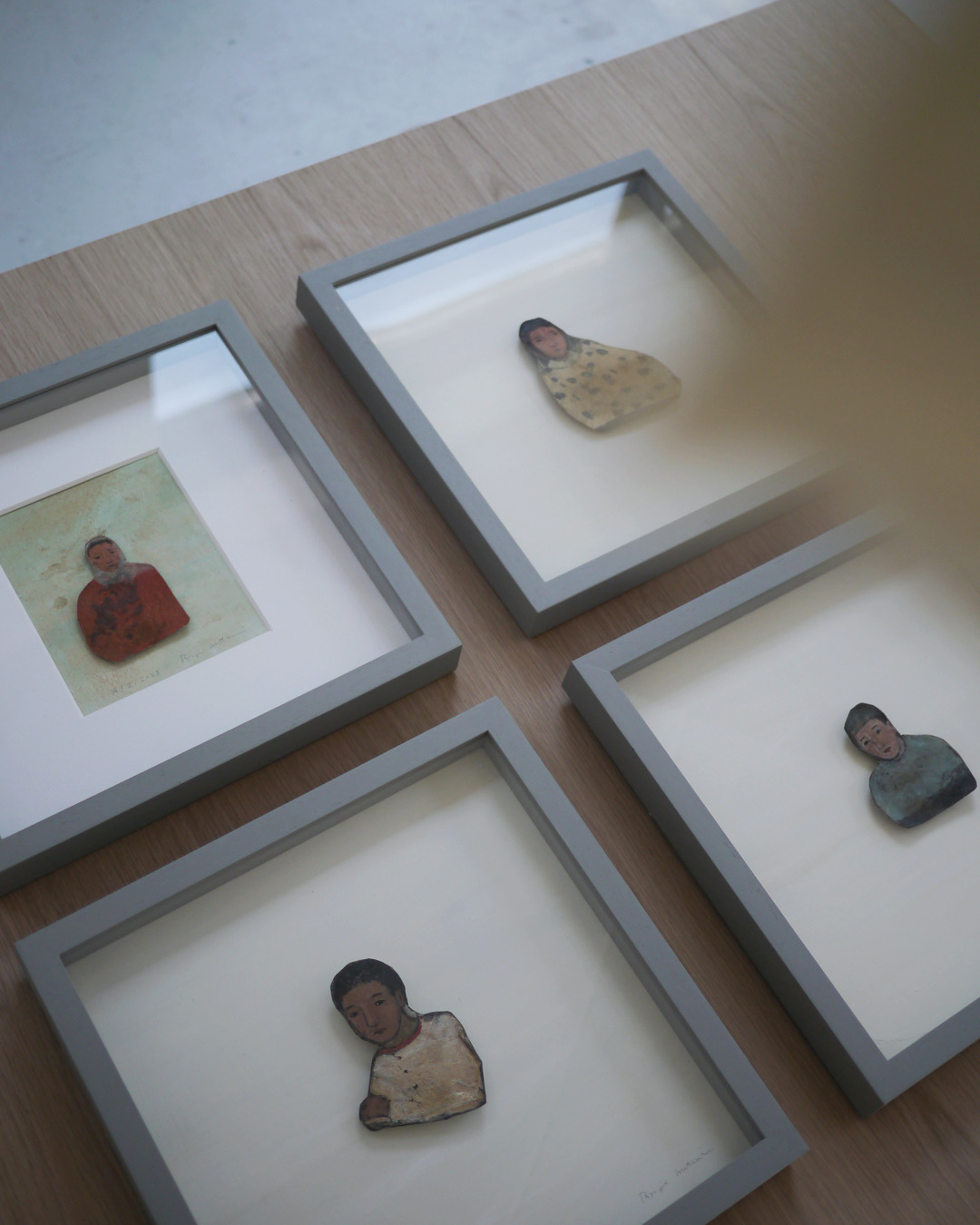

There were also the small, yet impactful, Bird of the Canyon Painting and a series of Painted Portraits: A,B,C,D made on paper. We later found out that the one of the lady in red was a portrait of his wife, Junko-san, for her birthday! There was one sculpture made specifically for the proportions of our gallery – Wire with Three Red Objects – in which Mitani-san acquired the materials from a fence surrounding an apple orchard on his property.



With the grander-than-usual exhibition, we also pined for something relatable that reminded us of the origin of why we started Nalata Nalata in the first place, which, in short, is human connection. We set this tone by showcasing examples of how Mitani-san’s works have brought meaning into people’s lives over the years in an exhibit we organized called ‘Afterlife.’ The show opened with two tables of private works loaned to us. Beside each work were personal thoughts by the owners on their significance. We’ve published the passages here for all those unable to visit in person.


The tableware of particular significance this year included the new Nano Glass treated wooden pieces like this Long Tray. With this unnoticeable finish, the pieces are given an urushi-like level of protection. They become capable of withstanding heavy use and cleaning and are stain and warp resistant.

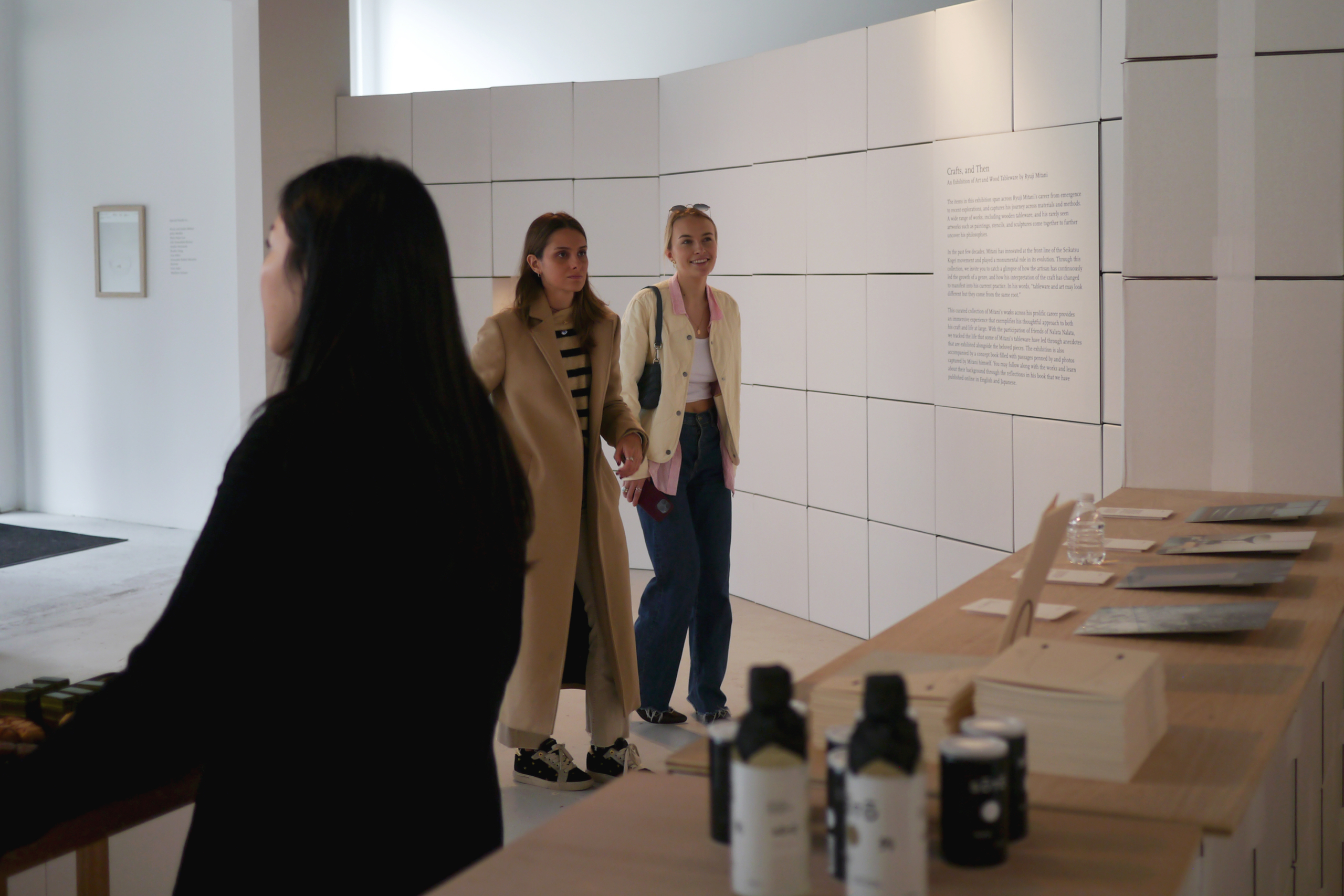


Another series we wanted to highlight is the “Blanc’ works. After decades of working with mostly white or black urushi lacquer, this exhibition marked Mitani-san’s introduction of titanium white pigment paint. By using paint instead of white lacquer, he creates a tone that is more optic white than what can be achieved with “white” urushi lacquer that reads as beige. In the “Blanc” series, to keep the pigment permanent, the pieces are coated with Nano glass finish. They were mesmerizing and reminded us of Rothko paintings.




There’s something so fun about our usual nighttime openings, but due to the postponement we had a daytime opening instead from 1-7pm that was great! Mitani-san stayed the entire day. Many visitors had an opportunity to meet him and appreciate the works in all lighting conditions as the sun set on the dancing facets of the carved wooden pieces.



Mitani-san also made a speech in Japanese that we translated. He concluded his speech with a few impactful phrases: “I think the true value of tableware is to be connected with people who use it, rather than being artistic. Art has tried to establish its own status and to pursue being pure, but in order to do so, it has cut off the nuances of daily life. Everyday life can sometimes be a boring and mundane routine, but I believe there is great value and richness in that. May our lives be lived in such a way”.




This was the first exhibition we forgot to take our obligatory Extra Place alley team photo, so a partial team photo taken by our friend Aya at dinner will have to do! In any case, we would be remiss if we didn’t mention the group of talent that helped bring this exhibition to life…

A special thank you to Ryuji Mitani and his wife, Junko Mitani. Also, thank you to John Medley for help with the buildout, our truly incredible team members Dani Lee and Lily Yamashita-Kenny, Studio Newwork who designed the graphics/exhibition print material/online publication of the concept book with the help of programmer Nao Fujimoto, Aya Nihei our Japan correspondent, Risako Yang our copy editor, Armando Rafael Moutela on photography and Ayako and Wataru of Burrow who provided too-beautiful-to-bite bites and Soto sake who provided refreshments for the opening reception. THANK YOU!

